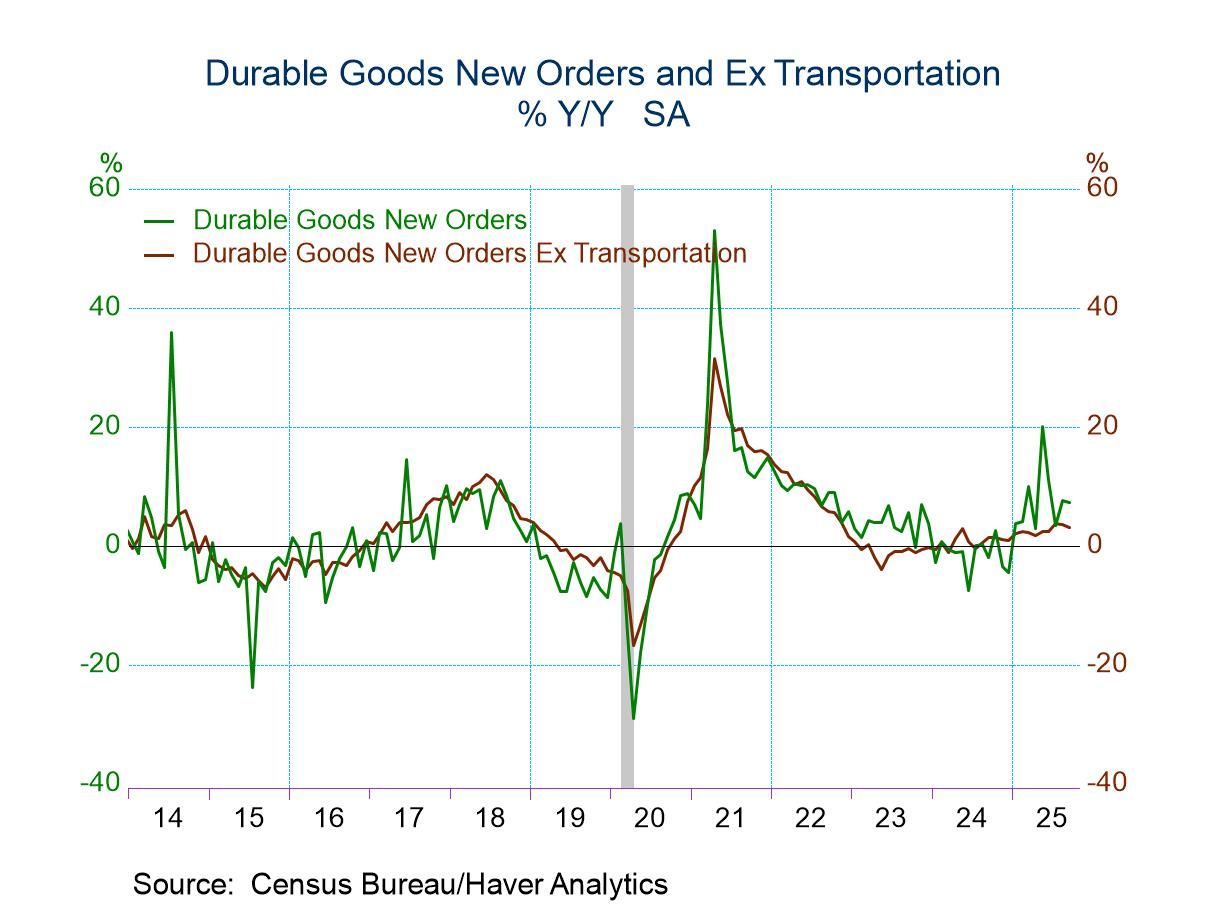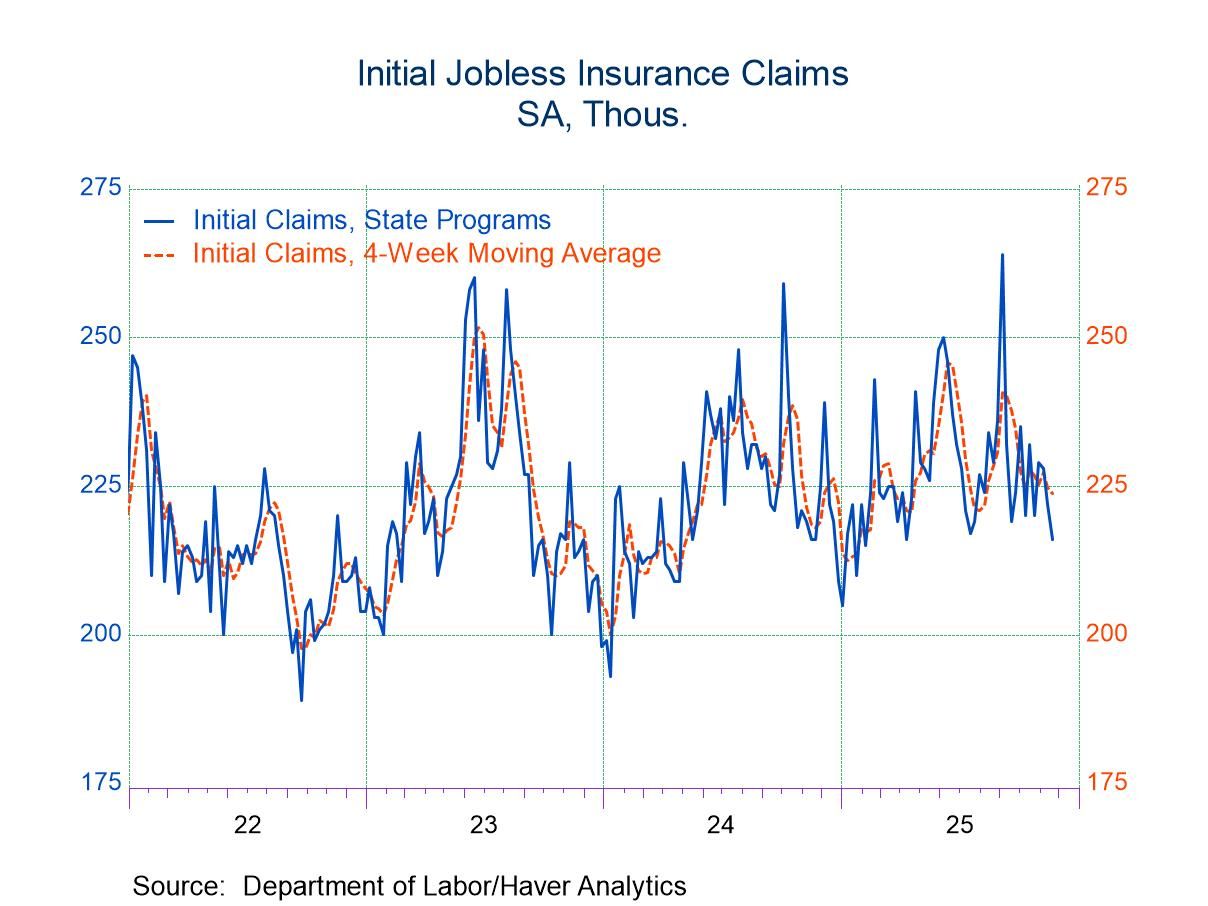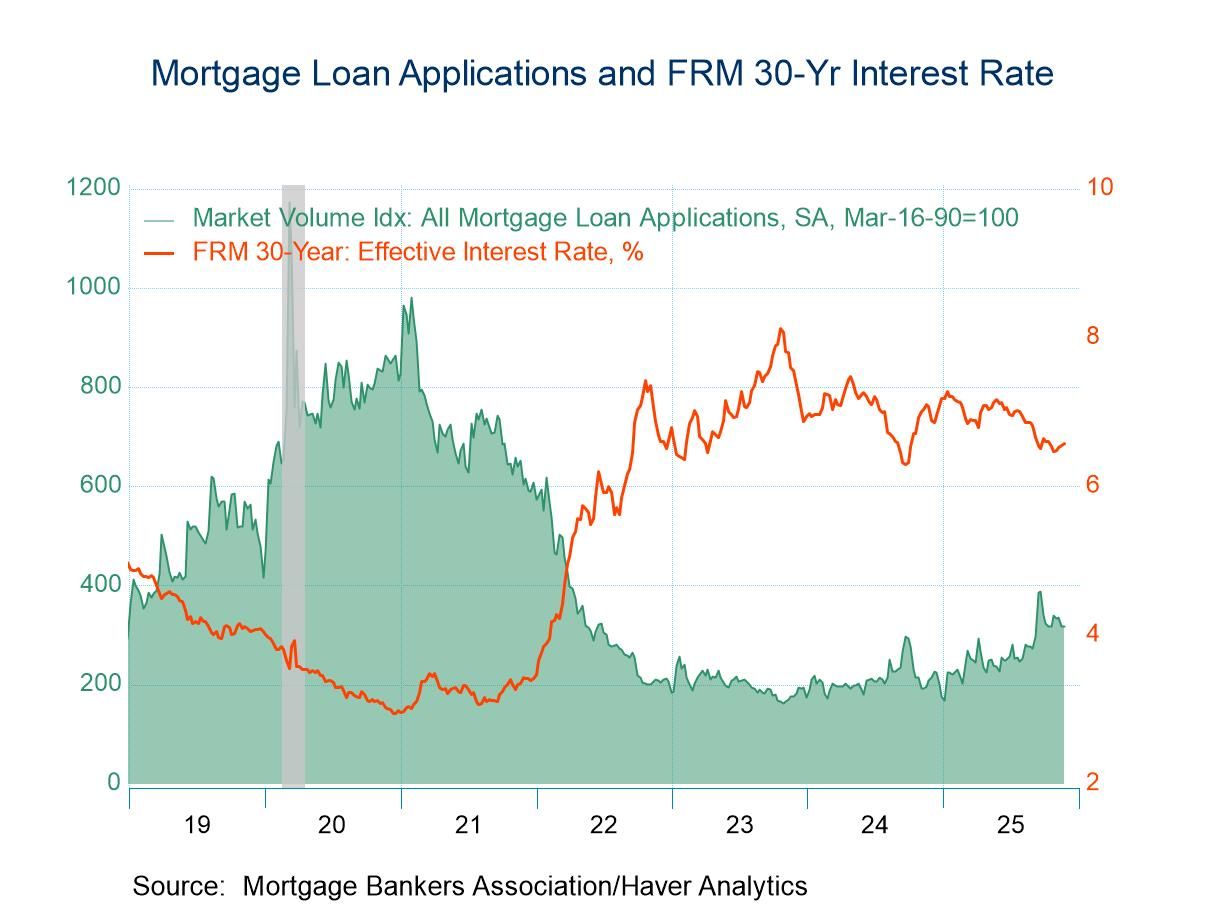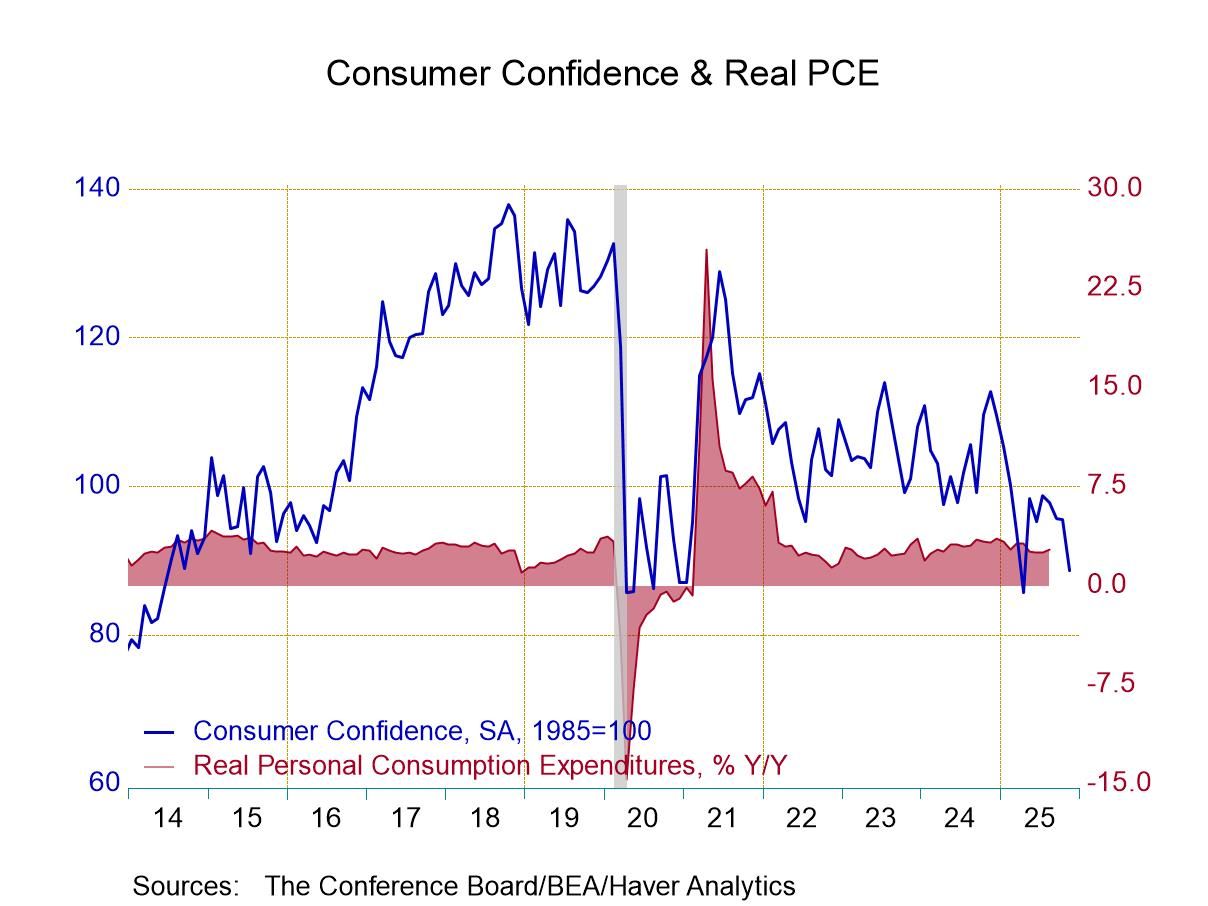Job growth is continuing at a moderate pace. Private nonfarm payrolls rose 170,000 last month after a 292,000 December increase which was revised down from 325,000 reported last month. The figures come from the payroll processor Automatic Data Processing (ADP) and economic consultants Macroeconomic Advisers. The latest increase was less than Consensus expectations for a 180,000 gain. The recent monthly increases left three-month growth at 2.5% (AR).
The U.S. Bureau of Labor Statistics will report January payroll employment on Friday. Economists expect a 155,000 worker increase in jobs. By comparison, the December increase of 292,000 in ADP's measure of private nonfarm payrolls was accompanied by a 212,000 gain in the BLS measure of private sector jobs. According to ADP and Macro-Advisers, the correlation between the monthly percentage change in the ADP figure and the BLS data is 0.90. ADP compiles its estimate from its database of individual companies' payroll information. Macroeconomic Advisers, LLC, the St. Louis economic consulting firm, developed the methodology for transforming the raw data into an economic indicator.
The service sector continued to lead improvement in the job market. Its 152,000 worker gain (1.9% y/y) contrasted to an 18,000 increase (1.2% y/y) in goods-producing payrolls while factory sector jobs rose 10,000 (0.9% y/y). Overall, small-sized payrolls again showed the most improvement with a 95,000 (2.0% y/y) gain. Medium-sized payrolls followed with a 72,000 (2.0% y/y) increase while large payrolls grew just 3,000 (0.6% y/y). Construction employment ticked up 2,000 and the number of financial activities jobs rose 9,000.
The ADP National Employment Report data is maintained in Haver's USECON database; historical figures date back to December 2000. The figures in this report cover only private sector jobs and exclude employment in the public sector. The ADP methodology is explained here. The expectations figures are available in Haver's AS1REPNA database.
Why Is Unemployment Duration So Long? from the Federal Reserve Bank of San Francisco is available here http://www.frbsf.org/publications/economics/letter/2012/el2012-03.html?utm_source=home
| ADP National Employment Report | Jan | Dec | Nov | Y/Y | 2011 | 2010 | 2009 |
|---|---|---|---|---|---|---|---|
| Nonfarm Private Payroll Employment (m/m Chg., 000s) | 170 | 292 | 209 | 1.8% | 1.4% | -1.1% | -4.8% |
| Small Payroll (1-49) | 95 | 136 | 111 | 2.0 | 1.6 | -0.8 | -3.9 |
| Medium Payroll (50-499) | 72 | 126 | 85 | 2.0 | 1.8 | -1.0 | -5.6 |
| Large Payroll (>500) | 3 | 30 | 13 | 0.6 | 0.2 | -2.0 | -5.6 |
| Goods Producing | 18 | 51 | 28 | 1.2 | 0.7 | -5.1 | -12.3 |
| Manufacturing | 10 | 20 | 5 | 0.9 | 1.2 | -3.3 | -11.3 |
| Service Producing | 152 | 241 | 181 | 1.9 | 1.6 | -0.2 | -3.1 |
U.S. ISM Factory Index Nudges Higher as
Pricing Improves
by Tom
Moeller February 1, 2012
Factory sector activity is improving but it's hardly robust. The Composite Index of factory sector activity from the Institute For Supply Management rose to 54.1 from a revised 53.1 in December. The latest reading roughly matched Consensus expectations and earlier data reflected updated seasonal factors. The reading was the highest since July of 2010 and was the thirtieth consecutive monthly figure above the break-even level of 50.
Month-to-month improvement amongst the index components was scattered with the strongest gain in inventories accompanied by higher new orders and supplier delivery speeds. The production figure fell from its recent high and the employment number slipped. During the last ten years there has been an 89% correlation between the employment series level and the m/m change in factory sector payrolls.
The price index rose a sharp eight points to 55.5, the first month above the break-even level of 50 since September. Thirty percent of firms raised prices, the most since July, while a reduced nineteen percent lowered them. During the last ten years there has been an 83% correlation between the index and the m/m change in the core intermediate producer price index.
The separate index of new export orders rose slightly to 55.0, its best since April. The imports series slipped to 52.5.
The ISM figures are diffusion indexes and can be found in Haver's USECON database. The expectations data are in the AS1REPNA database.
| ISM Mfg | Jan | Dec | Nov | Jan'11 | 2011 | 2010 | 2009 |
|---|---|---|---|---|---|---|---|
| Composite Index | 54.1 | 53.1 | 52.2 | 59.9 | 55.2 | 57.3 | 46.4 |
| New Orders | 57.6 | 54.8 | 55.0 | 63.8 | 56.4 | 59.2 | 52.0 |
| Production | 55.7 | 58.9 | 55.7 | 63.5 | 57.4 | 61.0 | 50.8 |
| Employment | 54.3 | 54.8 | 52.4 | 60.7 | 57.4 | 57.3 | 40.7 |
| Supplier Deliveries | 53.6 | 51.5 | 51.3 | 59.3 | 54.7 | 58.1 | 51.6 |
| Inventories | 49.5 | 45.5 | 46.5 | 52.0 | 50.1 | 50.8 | 37.1 |
| Prices Paid Index (NSA) | 55.5 | 47.5 | 45.0 | 81.5 | 65.2 | 68.9 | 48.3 |
U.S. Construction Spending Gain Is
Better-Than-Expected
by Tom
Moeller February 1, 2012
The level of building activity continues to improve, moderately. Construction spending during November rose 1.2% following a 0.2% October slip, revised from the 0.8% gain reported initially. However, September's gain was revised sharply higher to 1.1%. Consensus expectations were for a 0.4% November gain. These m/m machinations left the level of activity at its highest since June, 2010.
Private sector spending rose a sharp 1.0% led by a 2.0% rise (3.4% y/y) rise in residential building. The value of home-improvements again led the increase with a 2.6% rise (4.1% y/y). The value of single-family building rose 1.5% (2.5% y/y) and multi-family building increased 1.3% (4.1% y/y). Nonresidential building activity was unchanged m/m (4.5% y/y) with the y/y strength led by a 12.6% rise in factory sector building, a 12.0% gain in commercial construction, a 10.0% gain in education and a 9.2% rise in transportation. Building in the lodging sector fell 20.5% y/y and health care fell 4.9% y/y.
Public construction activity rose 1.7% (-5.3% y/y) and reversed its October decline. Power facility building jumped by nearly one-quarter m/m (-5.1% y/y) while highways & streets construction rose 1.9% (-2.2% y/y). The value of building in the latter category is nearly one-third of the public construction total. The value of building in the educational sector rose 0.5% (2.8% y/y). Office building fell 12.4% y/y and water supply was off 10.8% y/y.
The construction put-in-place figures are available in Haver's USECON database. The expectations figure is contained in Haver's AS1REPNA database.
| Construction Put in Place (%) | Dec | Nov | Oct | Y/Y | 2011 | 2010 | 2009 |
|---|---|---|---|---|---|---|---|
| Total | 1.2 | -0.2 | 0.5 | -11.3 | -15.3 | ||
| Private | 1.0 | 0.7 | 4.0 | -15.2 | -22.4 | ||
| Residential | 2.0 | 2.3 | 3.4 | -2.9 | -29.9 | ||
| Nonresidential | 0.0 | -0.6 | 4.5 | -24.0 | -16.0 | ||
| Public | 1.7 | -1.8 | -5.3 | -3.9 | 2.1 |


 Global
Global



